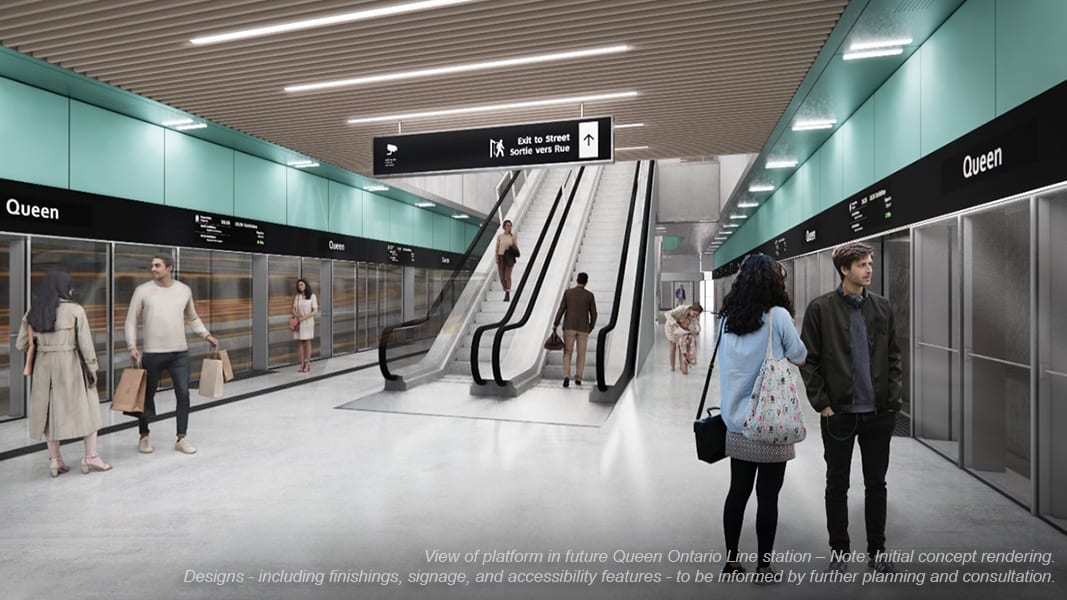
Ontario Line
A new 15.6-km subway line in Toronto that will run from Exhibition Place, through downtown, all the way to the Ontario Science Centre.- Projects & Programs
- Ontario Line
- Resources
- Joint Corridor Early Works Report
Lakeshore East Joint Corridor Early Works Report
Published on Nov. 17, 2021
Lakeshore East Joint Corridor early works will set the groundwork for other major construction on the Ontario Line and GO Expansion projects, reducing risk of construction delays to the main public-private partnership (P3) contracts by completing the Ontario Line and GO Expansion joint corridor work in advance of the main contracts for both of these transit projects.
The Lakeshore East Joint Corridor Early Works Report outlines the purpose of early works in and around the existing rail corridor in Riverside and Leslieville, including a description of local environmental conditions, potential impacts and proposed mitigation measures, and a record of consultation.
Read the full Lakeshore East Joint Corridor Early Works Report
Read the Statement of Completion
Read the Notice of Final Publication
Read Appendix B1 – Project distribution list
Read Appendix B2 – Project webpage
Read Appendix B3 – Consultation and correspondence record
Read Appendix C – Lakeshore East Joint Corridor Noise and Vibration Operations Report
Potential effects and mitigation measures
Potential effects:
- Disturbance or displacement of wildlife.
- Removal of/damage to trees, terrestrial vegetation and wildlife habitat, including migratory breeding bird habitat.
- Erosion and sedimentation
Mitigation measures:
- Identify opportunities to promote pollinator species and habitat in accordance with the Metrolinx Vegetation Guideline (2020) (e.g., this may include planting or seeding native flowering plants in temporarily disturbed areas).
- Tree and vegetation removal will be kept to a minimum and limited to within the construction footprint.
- Tree and vegetation removal compensation will be provided in accordance with the Metrolinx Vegetation Guideline (2020).
- Temporarily disturbed areas will be restored/re-vegetated.
- Erosion and sediment control measures will be implemented.
- Prior to early works activities, species-specific surveys will be completed to avoid or minimize potential impacts and meet all Species at Risk regulatory requirements.
- Tree Protection Zones will be clearly staked prior to construction using barriers in accordance with local by-law requirements.
Related Projects
Land Acknowledgement
Metrolinx acknowledges that it operates on lands that have been, and continue to be, home to many Indigenous Peoples including the Anishnabeg, the Haudenosaunee and the Huron-Wendat peoples. We are all Treaty people. Many of us have come here as settlers, as immigrants or involuntarily as part of the trans-Atlantic slave trade, in this generation, or generations past. We acknowledge the historic and continued impacts of colonization and the need to work towards meaningful reconciliation with the original caretakers of this land. We acknowledge that Metrolinx operates on territories and lands covered by many treaties that affirm and value the rights of Indigenous communities, Nations and Peoples. We understand the importance of working towards reconciliation with the original caretakers of this land. At Metrolinx, we will conduct business in a manner that is built on a foundation of trust, respect and collaboration.